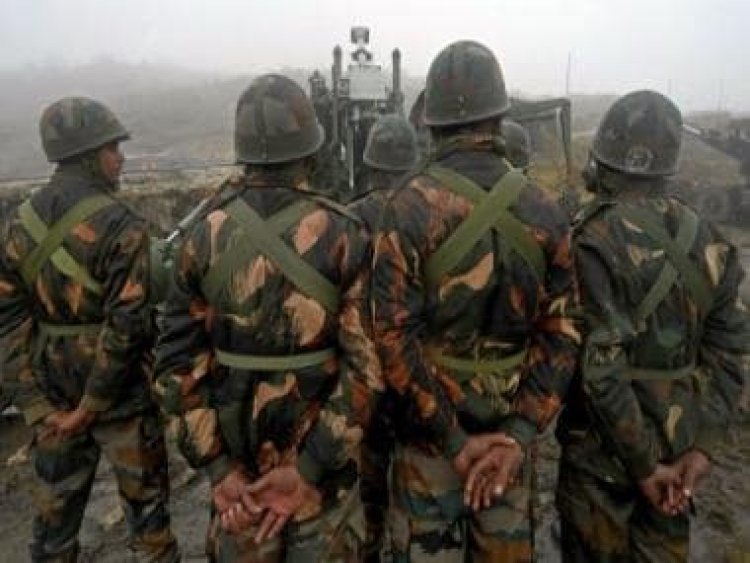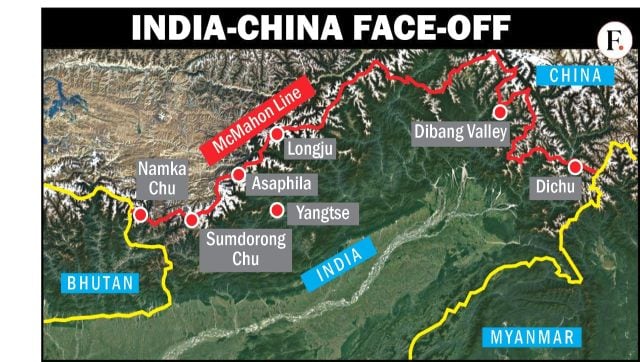India-China clash in Tawang: The significance of Arunachal Pradesh to Beijing, explained
India-China clash in Tawang: The significance of Arunachal Pradesh to Beijing, explained

Tensions are running high between India and China once again after the recent clashes between the troops of both armies at the Line of Actual Control (LAC) in Yangtse area of Tawang sector in Arunachal Pradesh.
On Tuesday, Defence Minister Rajnath Singh clarified the situation in Parliament saying that the “Peoples Liberation Army (PLA) troops carried out an incursion (“atikraman”) across the LAC in Yangtse area of Tawang sector in Arunachal Pradesh on 9 December, and attempted to unilaterally change the status quo. This turned into a hand-to-hand clash as the Indian troops retaliated to thwart the Chinese aggression, Singh said, adding that while there were injuries on both sides, there are no fatalities on the Indian side.
The defence minister further stated that following the clash, the local commander of the Indian Army held a flag meeting with his Chinese counterpart on 11 December, where China was asked to maintain peace.
This was the most recent clash that the Indian troops have had with the Chinese — the previous one was in eastern Ladakh’s Galwan in 2020 when India lost 20 of its troops.
Also read: The latest clash between Indian and Chinese troops in Arunachal’s Tawang
As the troops remain alert, we take a closer look at why China repeatedly targets Yangtse and the significance of Arunachal Pradesh to the Asian giant.
Location, location, location
The border is fuzzy, with both sides claiming territory that is in the other’s control. India claims some 45,000 square kilometres of territory in Aksai Chin in the western sector of the border, which China occupied in the 1962 war, while Beijing claims an area of around 90,000 square kilometres, roughly coinciding with the state of Arunachal Pradesh, in the eastern sector.

China refers to Arunachal Pradesh as Southern Tibet. Interestingly, during the 1962 war, China had taken control over vast swathes of this territory but then pulled back.
In Arunachal Pradesh, Yangtse is one of the 25 contested areas along the 3,488-km Line of Actual Control. Tawang is situated 448 km north-west of Itanagar and is roughly 16 km away south of the LAC with China.
Importance of Tawang
Tawang is strategically and culturally significant to China.
Before we take a look at the strategic importance of Tawang, here’s why it is culturally significant to China. Tawang houses the Tawang monastery, which is the second largest Tibetan Buddhist monastery in the world only after the Potala Palace.
Moreover, Tawang monastery is where the present Dalai Lama stayed for weeks after escaping China in 1959. Hence, from China’s perspective it becomes an important site in the history of Tibetan resistance to Chinese rule. If Tibet was to rise up against China, Tawang would, as a report in The Diplomat stated, emerge as an important centre of resistance.
Besides the cultural aspect, Tawang also holds tactical importance for China. The town provides a strategic entry into India’s northeastern region. To the north of Tawang lies the important Bum La Pass, which is a border pass between India’s Tawang district and Chinese-occupied Tibet Autonomous Region (TAR). Incidentally, it was this pass that the Chinese troops used to invade India in 1962.

China has always claimed Arunachal Pradesh as its own — and there’s a strategy there too. If India wished to attack China, Arunachal would be the closest location for India to deploy its missiles from. Additionally, as the Times of India reports, Arunachal is the best location for India to deploy a multi-layered air defence system for possible attacks from China.
Defence experts state that an increased presence of China in Arunachal would help Beijing exert is influence in the area as well as negate India’s presence. Experts believe that the latest skirmish was Beijing’s attempt at pushing the Indian defences and try and gain as many heights.
Also in Yangtse lies the crucial 17,000-feet high peak. This peak, in the firm control of India currently, provides a commandeering view on both sides of the border.
Experts state that there’s another reason why this area holds importance for China. The Chumi Gyatse Falls, a collection of 108 waterfalls that is sacred to the Buddhists.
When Tawang saw clashes in the past
The clash on 9 December in Tawang isn’t the first instance of Indian and Chinese troops clashing. Tawang was the site for several bloody encounters during the 1962 war between India and China.
In 1999, the Yangtse area once again saw action during the Kargil War when the PLA took up positions and stayed there for 40 days. They later withdrew from the positions.
Later in June 2016, it was reported that around 250 PLA soldiers had intruded into the area but there were no reports of clashes at the time. There was another report of an intrusion in September 2021 of around 200 PLA personnel at Yangtse, east of Bum La in the Tawang sector. However, an alert and vigilant India side caught the intruders and detained them for some time.
Following the clashes in Tawang, former foreign secretary Vijay Gokhale in an article for Carnegie India referred to the current situation on the LAC as an “armed coexistence”.
“India is now more willing and committed to enhancing military capacity in preparation for the situation of armed coexistence that it expects to prevail along the LAC,” he wrote.
With inputs from agencies
Read all the Latest News, Trending News, Cricket News, Bollywood News,
India News and Entertainment News here. Follow us on Facebook, Twitter and Instagram.
What's Your Reaction?

























































